Android 16 bietet viele neue Funktionen und APIs für Entwickler. In den folgenden Abschnitten werden diese Funktionen zusammengefasst, um Ihnen den Einstieg in die zugehörigen APIs zu erleichtern.
Eine detaillierte Liste der neuen, geänderten und entfernten APIs finden Sie im API-Diff-Bericht. Details zu neuen APIs finden Sie in der Android-API-Referenz. Neue APIs sind zur besseren Übersichtlichkeit hervorgehoben.Sie sollten auch Bereiche prüfen, in denen sich Plattformänderungen auf Ihre Apps auswirken könnten. Weitere Informationen finden Sie auf den folgenden Seiten:
- Verhaltensänderungen, die sich auf Apps auswirken, wenn sie auf Android 16 ausgerichtet sind
- Verhaltensänderungen, die sich unabhängig von
targetSdkVersionauf alle Apps auswirken
Hauptfunktion
Android umfasst neue APIs, die die Kernfunktionen des Android-Systems erweitern.
Zwei Android-API-Releases im Jahr 2025
- This preview is for the next major release of Android with a planned launch in Q2 of 2025. This release is similar to all of our API releases in the past, where we can have planned behavior changes that are often tied to a targetSdkVersion.
- We're planning the major release a quarter earlier (Q2 rather than Q3 in prior years) to better align with the schedule of device launches across our ecosystem, so more devices can get the major release of Android sooner. With the major release coming in Q2, you'll need to do your annual compatibility testing a few months earlier than in previous years to make sure your apps are ready.
- We plan to have another release in Q4 of 2025 which also will include new developer APIs. The Q2 major release will be the only release in 2025 to include planned behavior changes that could affect apps.
In addition to new developer APIs, the Q4 minor release will pick up feature updates, optimizations, and bug fixes; it will not include any app-impacting behavior changes.

We'll continue to have quarterly Android releases. The Q1 and Q3 updates in-between the API releases will provide incremental updates to help ensure continuous quality. We're actively working with our device partners to bring the Q2 release to as many devices as possible.
Using new APIs with major and minor releases
Guarding a code block with a check for API level is done today using
the SDK_INT constant with
VERSION_CODES. This will continue
to be supported for major Android releases.
if (SDK_INT >= VERSION_CODES.BAKLAVA) {
// Use APIs introduced in Android 16
}
The new SDK_INT_FULL
constant can be used for API checks against both major and minor versions with
the new VERSION_CODES_FULL
enumeration.
if (SDK_INT_FULL >= VERSION_CODES_FULL.[MAJOR or MINOR RELEASE]) {
// Use APIs introduced in a major or minor release
}
You can also use the
Build.getMinorSdkVersion()
method to get just the minor SDK version.
val minorSdkVersion = Build.getMinorSdkVersion(VERSION_CODES_FULL.BAKLAVA)
These APIs have not yet been finalized and are subject to change, so please send us feedback if you have any concerns.
User Experience und System-UI
Android 16 bietet App-Entwicklern und Nutzern mehr Kontrolle und Flexibilität bei der Konfiguration ihrer Geräte.
Fortschrittsbasierte Benachrichtigungen
Android 16 introduces progress-centric notifications to help users seamlessly track user-initiated, start-to-end journeys.
Notification.ProgressStyle is a new notification
style that lets you create progress-centric notifications. Key use cases include
rideshare, delivery, and navigation. Within the Notification.ProgressStyle
class, you can denote states and milestones in a user journey using
points and segments.
To learn more, see the Progress-centric notifications documentation page.
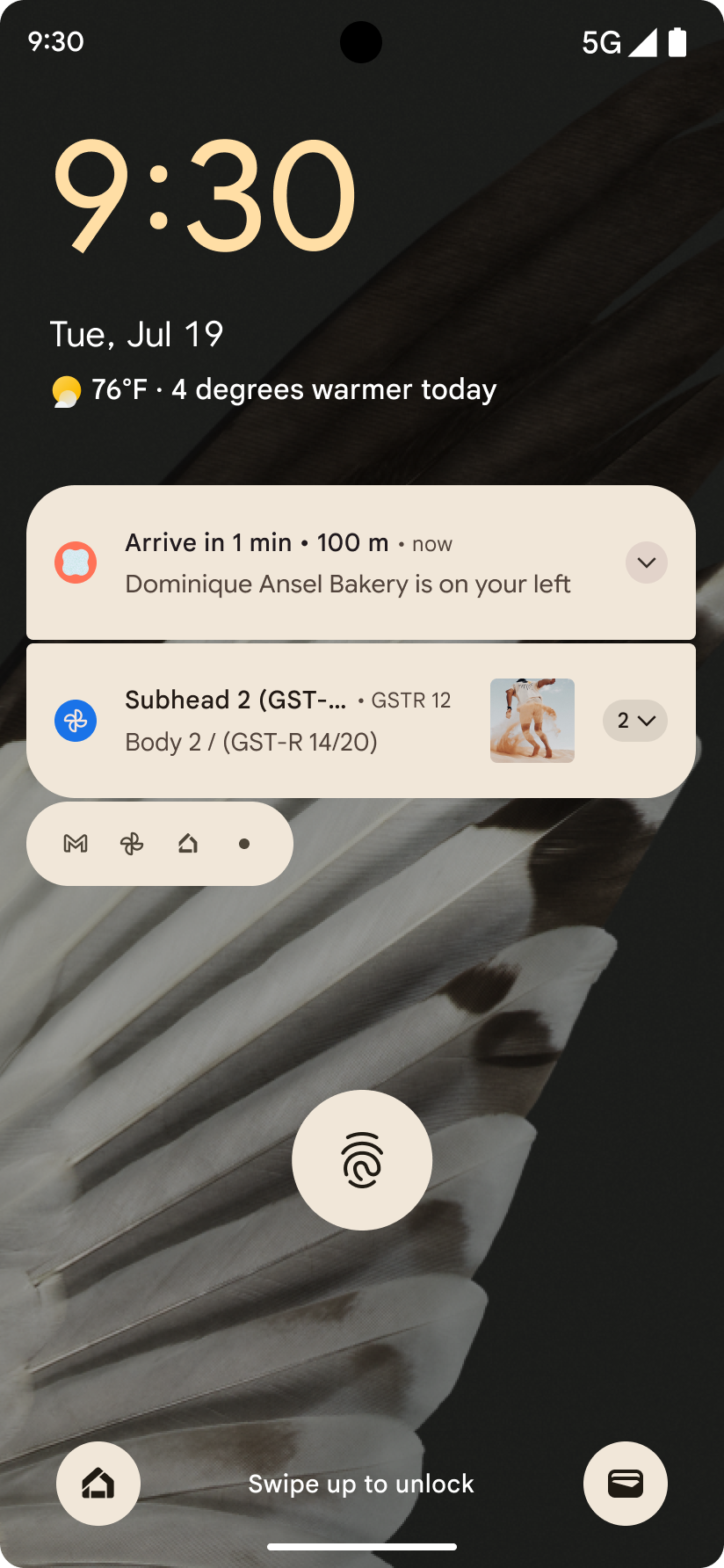
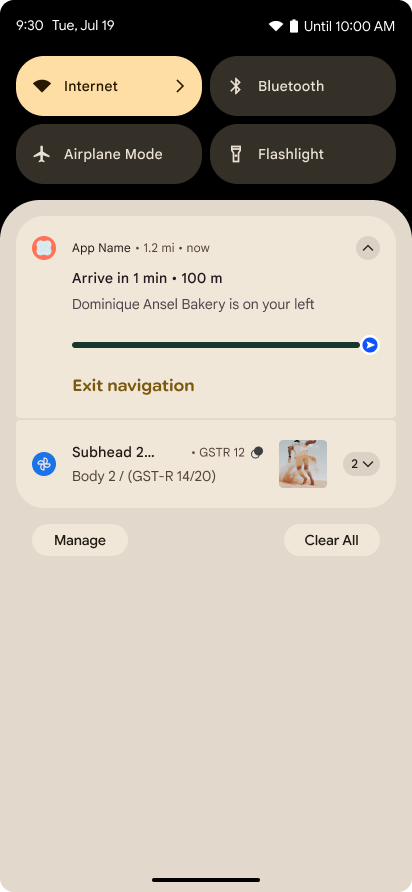
Updates für die intelligente „Zurück“-Geste
Android 16 adds new APIs to help you enable predictive back system animations in
gesture navigation such as the back-to-home animation. Registering the
onBackInvokedCallback with the new
PRIORITY_SYSTEM_NAVIGATION_OBSERVER allows your app to
receive the regular onBackInvoked call whenever the
system handles a back navigation without impacting the normal back navigation
flow.
Android 16 additionally adds the
finishAndRemoveTaskCallback() and
moveTaskToBackCallback. By registering these callbacks
with the OnBackInvokedDispatcher, the system can trigger
specific behaviors and play corresponding ahead-of-time animations when the back
gesture is invoked.
Detailliertere Haptik
Android bietet seit seiner Einführung die Möglichkeit, den haptischen Aktor zu steuern.
Android 11 unterstützt komplexere haptische Effekte, die durch VibrationEffect.Compositions von gerätedefinierten semantischen Primitiven unterstützt werden können.
Android 16 bietet Haptik-APIs, mit denen Apps die Amplituden- und Frequenzkurven eines haptischen Effekts definieren können, während Unterschiede zwischen den Gerätefunktionen abstrahiert werden.
Produktivität von Entwicklern und Tools
Die meisten unserer Bemühungen zur Steigerung Ihrer Produktivität konzentrieren sich auf Tools wie Android Studio, Jetpack Compose und die Android Jetpack-Bibliotheken. Wir suchen aber auch immer nach Möglichkeiten, Sie auf der Plattform bei der Umsetzung Ihrer Vision zu unterstützen.
Umgang mit Inhalten für Live-Hintergründe
In Android 16, the live wallpaper framework is gaining a new content API to
address the challenges of dynamic, user-driven wallpapers. Currently, live
wallpapers incorporating user-provided content require complex, service-specific
implementations. Android 16 introduces
WallpaperDescription and
WallpaperInstance. WallpaperDescription lets you
identify distinct instances of a live wallpaper from the same service. For
example, a wallpaper that has instances on both the home screen and on the lock
screen may have unique content in both places. The wallpaper picker and
WallpaperManager use this metadata to better present
wallpapers to users, streamlining the process for you to create diverse and
personalized live wallpaper experiences.
Leistung und Akku
Mit Android 16 werden APIs eingeführt, mit denen Sie Informationen zu Ihren Apps sammeln können.
Vom System ausgelöstes Profiling
ProfilingManager wurde in Android 15 hinzugefügt. Damit können Apps die Erhebung von Profilierungsdaten mit Perfetto auf öffentlichen Geräten vor Ort anfordern.
Da dieses Profiling jedoch von der App gestartet werden muss, können kritische Abläufe wie Starts oder ANRs von Apps nur schwer oder gar nicht erfasst werden.
Dazu wird in Android 16 das systemgetriggerte Profiling für ProfilingManager eingeführt. Apps können angeben, dass sie Protokolle für bestimmte Trigger wie Kaltstarts reportFullyDrawn oder ANRs erhalten möchten. Das System startet und beendet dann im Namen der App ein Protokoll. Nach Abschluss der Aufzeichnung werden die Ergebnisse an das Datenverzeichnis der App gesendet.
Startkomponente in ApplicationStartInfo
ApplicationStartInfo wurde in Android 15 hinzugefügt. Damit können Apps Gründe für den Prozessstart, den Starttyp, Startzeiten, Drosselungen und andere nützliche Diagnosedaten sehen. In Android 16 wird getStartComponent() hinzugefügt, um zu unterscheiden, welcher Komponententyp den Start ausgelöst hat. Das kann hilfreich sein, um den Startvorgang Ihrer App zu optimieren.
Bessere Job-Introspektion
The JobScheduler#getPendingJobReason() API returns a reason why a job
might be pending. However, a job might be pending for multiple reasons.
In Android 16, we are introducing a new API
JobScheduler#getPendingJobReasons(int jobId), which returns multiple
reasons why a job is pending, due to both explicit constraints set by the
developer and implicit constraints set by the system.
We're also introducing
JobScheduler#getPendingJobReasonsHistory(int jobId), which returns a list
of the most recent constraint changes.
We recommend using the API to help you debug why your jobs may not be executing, especially if you're seeing reduced success rates of certain tasks or have bugs around latency of certain job completion. For example, updating widgets in the background failed to occur or prefetch job failed to be called prior to app start.
This can also better help you understand if certain jobs are not completing due to system defined constraints versus explicitly set constraints.
Adaptive Aktualisierungsrate
Adaptive refresh rate (ARR), introduced in Android 15, enables the display refresh rate on supported hardware to adapt to the content frame rate using discrete VSync steps. This reduces power consumption while eliminating the need for potentially jank-inducing mode-switching.
Android 16 introduces hasArrSupport() and
getSuggestedFrameRate(int) while restoring
getSupportedRefreshRates() to make it easier for your apps to take
advantage of ARR. RecyclerView
1.4 internally supports ARR when it is settling from a fling or
smooth scroll, and we're continuing our work to add ARR
support into more Jetpack libraries. This frame rate article covers
many of the APIs you can use to set the frame rate so that your app can directly
use ARR.
Headroom-APIs in ADPF
The SystemHealthManager introduces the
getCpuHeadroom and
getGpuHeadroom APIs, designed to provide games and
resource-intensive apps with estimates of available CPU and GPU resources. These
methods offer a way for you to gauge how your app or game can best improve
system health, particularly when used in conjunction with other Android Dynamic
Performance Framework (ADPF) APIs that detect thermal
throttling.
By using CpuHeadroomParams and
GpuHeadroomParams on supported devices, you can
customize the time window used to compute the headroom and select between
average or minimum resource availability. This can help you reduce your CPU or
GPU resource usage accordingly, leading to better user experiences and improved
battery life.
Bedienungshilfen
Android 16 bietet neue Accessibility APIs und Funktionen, mit denen Sie Ihre App für alle Nutzer zugänglich machen können.
Verbesserte APIs für Bedienungshilfen
Android 16 bietet zusätzliche APIs zur Verbesserung der UI-Semantik, die die Konsistenz für Nutzer mit Bedienungshilfen wie TalkBack verbessern.
Textkontur hinzufügen, um den Textkontrast zu maximieren
Nutzer mit Sehschwäche haben oft eine verminderte Kontrastwahrnehmung, was es schwierig macht, Objekte von ihrem Hintergrund zu unterscheiden. Um diesen Nutzern zu helfen, wird in Android 16 Text mit Umriss eingeführt, der Text mit hohem Kontrast ersetzt. Dadurch wird ein größerer Kontrastbereich um den Text herum gezeichnet, um die Lesbarkeit erheblich zu verbessern.
Android 16 enthält neue AccessibilityManager APIs, mit denen Ihre Apps prüfen oder einen Listener registrieren können, um festzustellen, ob dieser Modus aktiviert ist. Dies gilt hauptsächlich für UI-Toolkits wie Compose, um eine ähnliche visuelle Darstellung zu bieten. Wenn Sie eine UI Toolkit-Bibliothek verwalten oder Ihre App benutzerdefiniertes Text-Rendering durchführt, das die Klasse android.text.Layout umgeht, können Sie so feststellen, ob der Outline-Text aktiviert ist.
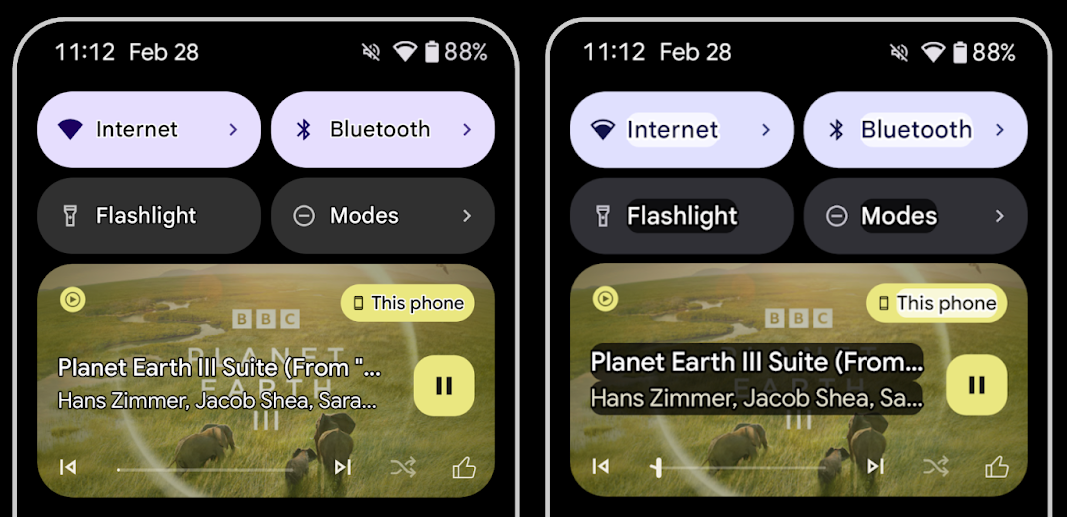
Dauer zu „TtsSpan“ hinzugefügt
Android 16 erweitert TtsSpan um ein TYPE_DURATION, das aus ARG_HOURS, ARG_MINUTES und ARG_SECONDS besteht. So können Sie die Zeitdauer direkt angeben und eine korrekte und konsistente Text-to-Speech-Ausgabe mit Diensten wie TalkBack sicherstellen.
Unterstützung für Elemente mit mehreren Labels
Auf Android-Geräten können UI-Elemente derzeit ihr Label für Barrierefreiheit von einem anderen ableiten. Jetzt können mehrere Labels verknüpft werden, was bei Webinhalten häufig vorkommt. Durch die Einführung einer listenbasierten API in AccessibilityNodeInfo kann Android diese Mehrfachlabelbeziehungen direkt unterstützen. Im Rahmen dieser Änderung werden AccessibilityNodeInfo#setLabeledBy und #getLabeledBy eingestellt. Stattdessen werden #addLabeledBy, #removeLabeledBy und #getLabeledByList verwendet.
Verbesserte Unterstützung für ausblendbare Elemente
Android 16 bietet APIs für Bedienungshilfen, mit denen Sie den maximierten oder minimierten Zustand interaktiver Elemente wie Menüs und erweiterbarer Listen angeben können. Wenn Sie den maximierten Zustand mit setExpandedState festlegen und TYPE_WINDOW_CONTENT_CHANGED-Bedienungshilfenereignisse mit einem Inhaltsänderungstyp CONTENT_CHANGE_TYPE_EXPANDED senden, können Sie dafür sorgen, dass Screenreader wie TalkBack Statusänderungen ansagen, was eine intuitivere und inklusivere Nutzererfahrung ermöglicht.
Unbestimmte Fortschrittsbalken
In Android 16 wird RANGE_TYPE_INDETERMINATE hinzugefügt. So können Sie RangeInfo sowohl für bestimmte als auch für unbestimmte ProgressBar-Widgets anzeigen lassen. Dienste wie TalkBack können dann konsistenter Feedback zu Fortschrittsanzeigen geben.
Drei-Status-Kästchen
Die neuen Methoden AccessibilityNodeInfo, getChecked und setChecked(int) in Android 16 unterstützen jetzt zusätzlich zu „angeklickt“ und „deaktiviert“ den Status „teilweise angeklickt“. Dieser Wert ersetzt die verworfenen Booleschen Werte isChecked und setChecked(boolean).
Zusätzliche Beschreibungen
Wenn ein Bedienungshilfendienst eine ViewGroup beschreibt, werden Inhaltslabels der untergeordneten Ansichten kombiniert. Wenn Sie eine contentDescription für die ViewGroup angeben, gehen Bedienungshilfen davon aus, dass Sie auch die Beschreibung der nicht fokussierbaren untergeordneten Ansichten überschreiben. Das kann problematisch sein, wenn Sie beispielsweise ein Drop-down-Menü (z. B. „Schriftfamilie“) beschriften und gleichzeitig die aktuelle Auswahl für die Barrierefreiheit beibehalten möchten (z. B. „Roboto“). In Android 16 wird setSupplementalDescription hinzugefügt, damit Sie Text mit Informationen zu einer ViewGroup angeben können, ohne Informationen ihrer untergeordneten Elemente zu überschreiben.
Pflichtfelder im Formular
In Android 16 wird setFieldRequired zu AccessibilityNodeInfo hinzugefügt, damit Apps einem Bedienungshilfendienst mitteilen können, dass Eingaben in einem Formularfeld erforderlich sind. Das ist ein wichtiges Szenario für Nutzer, die viele Arten von Formularen ausfüllen, selbst wenn es sich nur um ein Kästchen für die Nutzungsbedingungen handelt. So können Nutzer die Pflichtfelder immer wieder erkennen und schnell zwischen ihnen wechseln.
Smartphone als Mikrofoneingabe für Sprachanrufe mit LEA-Hörgeräten
Android 16 adds the capability for users of LE Audio hearing aids to switch between the built-in microphones on the hearing aids and the microphone on their phone for voice calls. This can be helpful in noisy environments or other situations where the hearing aid's microphones might not perform well.
Einstellungen für die Umgebungslautstärke für Hörgeräte mit LEA
Android 16 adds the capability for users of LE Audio hearing aids to adjust the volume of ambient sound that is picked up by the hearing aid's microphones. This can be helpful in situations where background noise is too loud or too quiet.
Kamera
Android 16 bietet eine verbesserte Unterstützung für professionelle Kameranutzer und ermöglicht die Hybrid-Auto-Belichtung sowie präzise Anpassungen von Farbtemperatur und Farbton. Ein neuer Nachtmodus-Indikator hilft Ihrer App, zu erkennen, wann sie in eine Kamerasitzung im Nachtmodus wechseln und wann sie diese beenden sollte. Neue Intent-Aktionen erleichtern das Aufnehmen von Bewegungsfotos. Außerdem verbessern wir UltraHDR-Bilder weiter, indem wir die HEIC-Codierung und neue Parameter aus dem ISO 21496-1-Entwurf unterstützen.
Hybride automatische Belichtung
Android 16 adds new hybrid auto-exposure modes to Camera2, allowing you to manually control specific aspects of exposure while letting the auto-exposure (AE) algorithm handle the rest. You can control ISO + AE, and exposure time + AE, providing greater flexibility compared to the current approach where you either have full manual control or rely entirely on auto-exposure.
fun setISOPriority() {
// ... (Your existing code before the snippet) ...
val availablePriorityModes = mStaticInfo.characteristics.get(
CameraCharacteristics.CONTROL_AE_AVAILABLE_PRIORITY_MODES
)
// ... (Your existing code between the snippets) ...
// Turn on AE mode to set priority mode
reqBuilder.set(
CaptureRequest.CONTROL_AE_MODE,
CameraMetadata.CONTROL_AE_MODE_ON
)
reqBuilder.set(
CaptureRequest.CONTROL_AE_PRIORITY_MODE,
CameraMetadata.CONTROL_AE_PRIORITY_MODE_SENSOR_SENSITIVITY_PRIORITY
)
reqBuilder.set(
CaptureRequest.SENSOR_SENSITIVITY,
TEST_SENSITIVITY_VALUE
)
val request: CaptureRequest = reqBuilder.build()
// ... (Your existing code after the snippet) ...
}
Genaue Anpassung von Farbtemperatur und Farbton
Android 16 adds camera support for fine color temperature and tint adjustments
to better support professional video recording applications. In previous Android
versions, you could control white balance settings through
CONTROL_AWB_MODE, which contains options limited to a
preset list, such as Incandescent,
Cloudy, and Twilight. The
COLOR_CORRECTION_MODE_CCT enables the use of
COLOR_CORRECTION_COLOR_TEMPERATURE and
COLOR_CORRECTION_COLOR_TINT for precise adjustments of
white balance based on the correlated color temperature.
fun setCCT() {
// ... (Your existing code before this point) ...
val colorTemperatureRange: Range<Int> =
mStaticInfo.characteristics[CameraCharacteristics.COLOR_CORRECTION_COLOR_TEMPERATURE_RANGE]
// Set to manual mode to enable CCT mode
reqBuilder[CaptureRequest.CONTROL_AWB_MODE] = CameraMetadata.CONTROL_AWB_MODE_OFF
reqBuilder[CaptureRequest.COLOR_CORRECTION_MODE] = CameraMetadata.COLOR_CORRECTION_MODE_CCT
reqBuilder[CaptureRequest.COLOR_CORRECTION_COLOR_TEMPERATURE] = 5000
reqBuilder[CaptureRequest.COLOR_CORRECTION_COLOR_TINT] = 30
val request: CaptureRequest = reqBuilder.build()
// ... (Your existing code after this point) ...
}
The following examples show how a photo would look after applying different color temperature and tint adjustments:
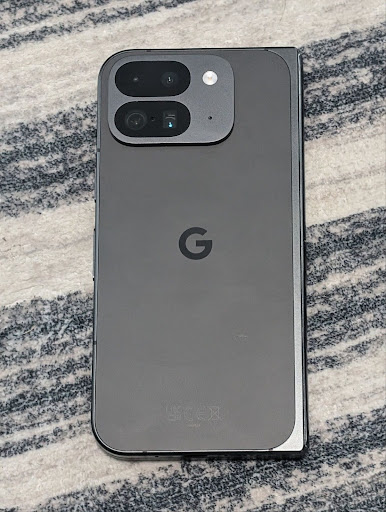
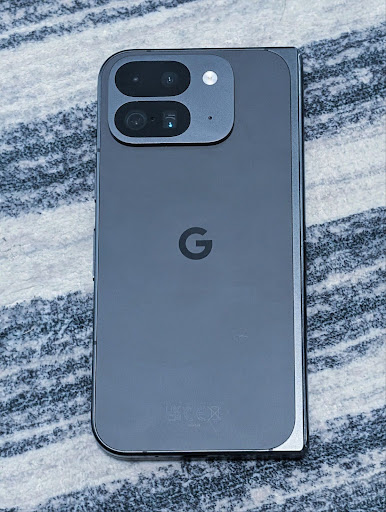
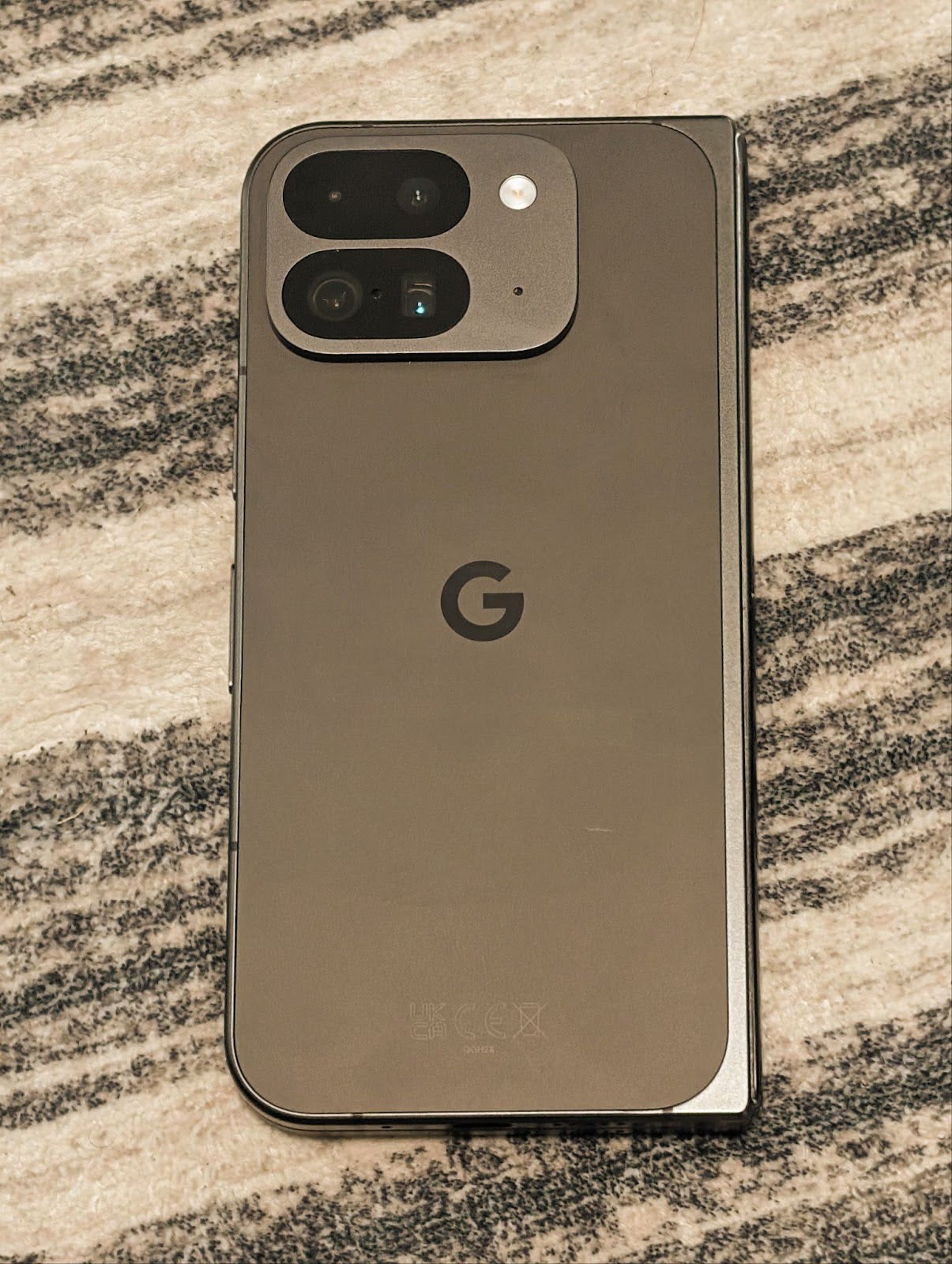
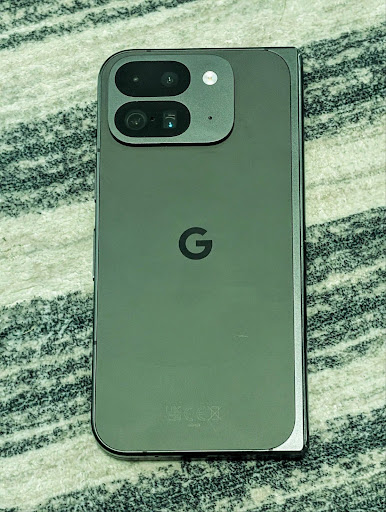
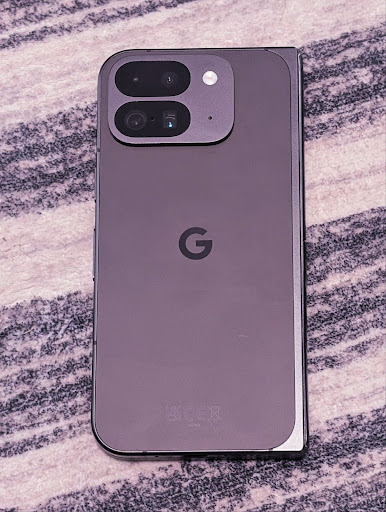
Szenenerkennung im Nachtmodus der Kamera
Damit Ihre App weiß, wann sie zu einer Kamerasitzung im Nachtmodus wechseln und wieder davon zurückwechseln soll, wird in Android 16 EXTENSION_NIGHT_MODE_INDICATOR hinzugefügt. Wenn unterstützt, ist sie in Camera2 unter CaptureResult verfügbar.
Das ist die API, die wir im Blogpost So ermöglicht Instagram Nutzern atemberaubende Fotos bei wenig Licht kurz als bald verfügbar erwähnt haben. Dieser Beitrag enthält eine praktische Anleitung zur Implementierung des Nachtmodus sowie eine Fallstudie, in der eine höhere Qualität der In-App-Fotos im Nachtmodus mit einer Steigerung der Anzahl der über die In-App-Kamera geteilten Fotos in Verbindung gebracht wird.
Intent-Aktionen für die Aufnahme von Fotos mit Bewegtbild
Android 16 fügt Standard-Intent-Aktionen hinzu: ACTION_MOTION_PHOTO_CAPTURE und ACTION_MOTION_PHOTO_CAPTURE_SECURE. Sie fordern die Kameraanwendung auf, ein Action-Foto aufzunehmen und zurückzugeben.
Sie müssen entweder ein zusätzliches EXTRA_OUTPUT übergeben, um zu steuern, wo das Bild geschrieben wird, oder ein Uri über Intent.setClipData(ClipData). Wenn Sie ClipData nicht festlegen, wird sie beim Aufrufen von Context.startActivity(Intent) dort für Sie kopiert.
Ultra HDR-Bildoptimierung
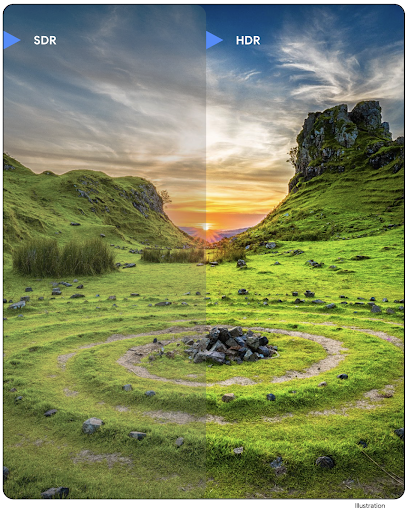
Mit Android 16 setzen wir unsere Bemühungen fort, mit Ultra-HDR-Bildern eine beeindruckende Bildqualität zu bieten. Es wird die Unterstützung für Ultra-HDR-Bilder im HEIC-Dateiformat hinzugefügt. Diese Bilder erhalten den Typ ImageFormat HEIC_ULTRAHDR und enthalten eine eingebettete Verstärkungskarte, ähnlich wie das vorhandene UltraHDR-JPEG-Format. Wir arbeiten auch an der AVIF-Unterstützung für UltraHDR. Mehr dazu demnächst.
Außerdem werden in Android 16 zusätzliche Parameter in UltraHDR aus dem ISO 21496-1-Entwurfsstandard implementiert. Dazu gehören die Möglichkeit, den Farbraum abzurufen und festzulegen, in dem die Gainmap-Berechnung angewendet werden soll, sowie die Unterstützung für HDR-codierte Basisbilder mit SDR-Gainmaps.
Grafik
Android 16 bietet die neuesten Grafikverbesserungen, z. B. benutzerdefinierte Grafikeffekte mit AGSL.
Benutzerdefinierte grafische Effekte mit AGSL
Android 16 adds RuntimeColorFilter and
RuntimeXfermode, allowing you to author complex effects like
Threshold, Sepia, and Hue Saturation and apply them to draw calls. Since Android
13, you've been able to use AGSL to create custom
RuntimeShaders that extend Shader. The new API
mirrors this, adding an AGSL-powered RuntimeColorFilter that
extends ColorFilter, and a Xfermode effect that
lets you implement AGSL-based custom compositing and blending between source and
destination pixels.
private val thresholdEffectString = """
uniform half threshold;
half4 main(half4 c) {
half luminosity = dot(c.rgb, half3(0.2126, 0.7152, 0.0722));
half bw = step(threshold, luminosity);
return bw.xxx1 * c.a;
}"""
fun setCustomColorFilter(paint: Paint) {
val filter = RuntimeColorFilter(thresholdEffectString)
filter.setFloatUniform(0.5);
paint.colorFilter = filter
}
Konnektivität
Mit Android 16 wird die Plattform aktualisiert, damit Ihre App Zugriff auf die neuesten Fortschritte in der Kommunikations- und Funktechnologie hat.
Entfernungsmessung mit erweiterter Sicherheit
Android 16 adds support for robust security features in Wi-Fi location on supported devices with Wi-Fi 6's 802.11az, allowing apps to combine the higher accuracy, greater scalability, and dynamic scheduling of the protocol with security enhancements including AES-256-based encryption and protection against MITM attacks. This allows it to be used more safely in proximity use cases, such as unlocking a laptop or a vehicle door. 802.11az is integrated with the Wi-Fi 6 standard, leveraging its infrastructure and capabilities for wider adoption and easier deployment.
Allgemeine APIs für die Reichweite
Android 16 enthält das neue Symbol RangingManager, mit dem sich auf unterstützter Hardware die Entfernung und der Winkel zwischen dem lokalen Gerät und einem Remote-Gerät bestimmen lassen. RangingManager unterstützt die Verwendung verschiedener Technologien zur Entfernungsmessung wie BLE-Kanalabfrage, BLE-RSSI-basierte Entfernungsmessung, Ultrabreitband und WLAN-Rücklaufzeit.
Gerätepräsenz im Begleitgerätemanager
In Android 16, new APIs are being introduced for binding your companion app
service. Service will be bound when BLE is in range and Bluetooth is connected
and service will be unbound when BLE is out of range or Bluetooth is
disconnected. App will receives a new
'onDevicePresenceEvent()' callback based on various
of DevicePresenceEvent.
More details can be found in
'startObservingDevicePresence(ObservingDevicePresenceRequest)'.
Medien
Android 16 bietet eine Vielzahl von Funktionen, die die Medienwiedergabe verbessern.
Verbesserungen bei der Bildauswahl
The photo picker provides a safe, built-in way for users to grant your app access to selected images and videos from both local and cloud storage, instead of their entire media library. Using a combination of Modular System Components through Google System Updates and Google Play services, it's supported back to Android 4.4 (API level 19). Integration requires just a few lines of code with the associated Android Jetpack library.
Android 16 includes the following improvements to the photo picker:
- Embedded photo picker: New APIs that enable apps to embed the photo picker into their view hierarchy. This allows it to feel like a more integrated part of the app while still leveraging the process isolation that allows users to select media without the app needing overly broad permissions. To maximize compatibility across platform versions and simplify your integration, you'll want to use the forthcoming Android Jetpack library if you want to integrate the embedded photo picker.
- Cloud search in photo picker: New APIs that enable searching from the cloud media provider for the Android photo picker. Search functionality in the photo picker is coming soon.
Erweiterte professionelle Videoinhalte
Android 16 unterstützt den Advanced Professional Video (APV)-Codec, der für die professionelle Videoaufzeichnung und -nachbearbeitung entwickelt wurde.
Der APV-Codecstandard hat folgende Funktionen:
- Perzeptionsverlustfreie Videoqualität (nahe an der Rohvideoqualität)
- Nur-Intraframe-Codierung mit niedriger Komplexität und hohem Durchsatz (ohne Pixelbereichsvorhersage) zur besseren Unterstützung von Bearbeitungsabläufen
- Unterstützung hoher Bitrate bis zu einigen Gbit/s für Inhalte mit 2K-, 4K- und 8K-Auflösung, ermöglicht durch ein schlankes Entropiecodierungsschema
- Frame-Kachelung für immersive Inhalte und parallele Codierung und Dekodierung
- Unterstützung verschiedener Chroma-Sampling-Formate und Bittiefen
- Unterstützung für mehrere Dekodierungen und erneute Codierungen ohne erhebliche Beeinträchtigung der Bildqualität
- Unterstützung von Multiview-Videos und zusätzlichen Videos wie Tiefen-, Alpha- und Vorschauvideos
- Unterstützung für HDR10/10+ und benutzerdefinierte Metadaten
Eine Referenzimplementierung von APV wird über das OpenAPV-Projekt bereitgestellt. Android 16 unterstützt das APV 422-10-Profil, das YUV 422-Farbstichproben mit 10-Bit-Codierung und Zielbitraten von bis zu 2 Gbit/s bietet.
Datenschutz
Android 16 enthält eine Vielzahl von Funktionen, die App-Entwicklern helfen, den Datenschutz der Nutzer zu schützen.
Health Connect-Updates
Health Connect adds ACTIVITY_INTENSITY, a data type defined according to World
Health Organization guidelines around moderate and vigorous activity. Each
record requires the start time, the end time, and whether the activity intensity
is moderate or vigorous.
Health Connect also contains updated APIs supporting medical records. This allows apps to read and write medical records in FHIR format with explicit user consent.
Privacy Sandbox für Android
Android 16 incorporates the latest version of the Privacy Sandbox on Android, part of our ongoing work to develop technologies where users know their privacy is protected. Our website has more about the Privacy Sandbox on Android developer beta program to help you get started. Check out the SDK Runtime which allows SDKs to run in a dedicated runtime environment separate from the app they are serving, providing stronger safeguards around user data collection and sharing.
Sicherheit
Android 16 enthält Funktionen, mit denen Sie die Sicherheit Ihrer App verbessern und die Daten Ihrer App schützen können.
API zum Teilen von Schlüsseln
Android 16 bietet APIs, mit denen der Zugriff auf Schlüssel des Android Keystore für andere Apps freigegeben werden kann. Die neue Klasse KeyStoreManager unterstützt das Gewähren und Widerrufen des Zugriffs auf Schlüssel nach App-uid und enthält eine API, über die Apps auf freigegebene Schlüssel zugreifen können.
Formfaktoren von Geräten
Android 16 bietet Ihren Apps die Unterstützung, die sie benötigen, um die Formfaktoren von Android optimal zu nutzen.
Standardisiertes Framework für Bild- und Audioqualität für Fernseher
The new MediaQuality
package in Android 16 exposes
a set of standardized APIs for access to audio and picture profiles and
hardware-related settings. This allows streaming apps to query profiles and
apply them to media dynamically:
- Movies mastered with a wider dynamic range require greater color accuracy to see subtle details in shadows and adjust to ambient light, so a profile that prefers color accuracy over brightness may be appropriate.
- Live sporting events are often mastered with a narrow dynamic range, but are often watched in daylight, so a profile that preferences brightness over color accuracy can give better results.
- Fully interactive content wants minimal processing to reduce latency, and wants higher frame rates, which is why many TV's ship with a game profile.
The API allows apps to switch between profiles and users to enjoy tuning supported TVs to best suit their content.
Lokalisierung
Android 16 bietet Funktionen und Möglichkeiten, die die Nutzerfreundlichkeit verbessern, wenn ein Gerät in verschiedenen Sprachen verwendet wird.
Vertikaler Text
Android 16 adds low-level support for rendering and measuring text vertically to
provide foundational vertical writing support for library developers. This is
particularly useful for languages like Japanese that commonly use vertical
writing systems. A new flag,
VERTICAL_TEXT_FLAG,
has been added to the Paint class. When
this flag is set using
Paint.setFlags, Paint's
text measurement APIs will report vertical advances instead of horizontal
advances, and Canvas will draw text
vertically.
val text = "「春は、曙。」"
Box(
Modifier.padding(innerPadding).background(Color.White).fillMaxSize().drawWithContent {
drawIntoCanvas { canvas ->
val paint = Paint().apply { textSize = 64.sp.toPx() }
// Draw text vertically
paint.flags = paint.flags or VERTICAL_TEXT_FLAG
val height = paint.measureText(text)
canvas.nativeCanvas.drawText(
text,
0,
text.length,
size.width / 2,
(size.height - height) / 2,
paint
)
}
}
) {}
Messsystem anpassen
Nutzer können das Maßsystem jetzt in den regionalen Einstellungen unter „Einstellungen“ anpassen. Die Nutzereinstellung ist Teil des Gebietscodes. Sie können also eine BroadcastReceiver unter ACTION_LOCALE_CHANGED registrieren, um Änderungen an der Gebietskonfiguration zu verarbeiten, wenn sich die regionalen Einstellungen ändern.
Mit Formatierungsoptionen können Sie die Inhalte an die jeweilige Region anpassen. „0,5 in“ auf Englisch (USA) entspricht beispielsweise „12,7 mm“ für einen Nutzer,der sein Smartphone auf Englisch (Dänemark) eingestellt hat oder sein Smartphone auf Englisch (USA) mit dem metrischen System als bevorzugtem Maßsystem verwendet.
Öffnen Sie dazu die Einstellungen und gehen Sie zu System > Sprache und Region.

